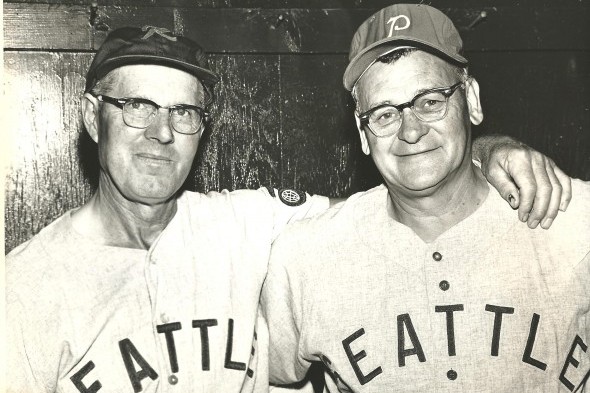
By David Eskenazi and Steve Rudman
Long-tortured Seattle Mariners fans will recall the events of April 20, 1990, when right hander Brian Holman set down the first 26 Oakland batters he faced and only needed to retire former Mariner Ken Phelps, pinch hitting for Mike Gallego, to notch what then would have been the 11th perfect game in major league history.
But Phelps denied Holmans historic bid by sending the first pitch he saw deep into the right-field seats, leaving Holman, who then struck out Rickey Henderson swinging, with a one-hitter, the ninth in Mariners history. Holman not only lost the perfect game, he lost a no-hitter and a shutout.
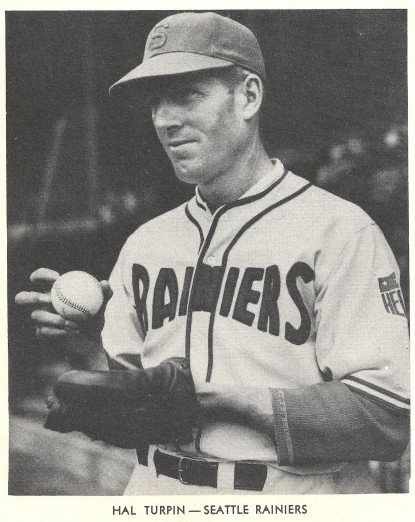
There are worse ways to lose a perfect game than to have a former teammate deposit one in the seats. To wit, the astonishing manner in which George Leroy Hooks Wiltse of the New York Giants lost one July 8, 1908 at the Polo Grounds.
Wiltse mowed down 26 consecutive Philadelphia Phillies that afternoon and needed only to dispose of the pitcher, George McQuillan, batting .151, to join Cy Young (May 5, 1904) as baseballs only perfect-game pitchers. Instead, with the count 2-and-2, Wiltse inexplicably plunked McQuillan — with a curve ball.
Even worse than losing a perfect game by hitting the opposing teams pitcher with a curveball is losing one on a glaringly bad call by the umpire a ball-four ruling that virtually everyone in attendance, including the batter, agreed should have been strike three.
That nasty fate befell 38-year-old Farmer Hal Turpin of the Seattle Rainiers April 12, 1942, 34 years after Wiltse drilled McQuillan and 48 years before Phelps victimized Holman.
The Rainiers were in San Diego that Sunday afternoon to play a doubleheader against the Padres, managed by Cedric Durst, a former major league outfielder who, in his own playing career, backed up George Sisler (St. Louis Browns) from 1923-26 and Babe Ruth (New York Yankees) from 1927-30.
Turpin, the Game 1 starter, worked quickly, as per his custom, and didnt meet much resistance from San Diegos hitters. Using a curve and the wicked sidearm knuckleball that had made him the scourge of Pacific Coast League hitters for more than half a decade, Squire Turp was more efficient than dominating.
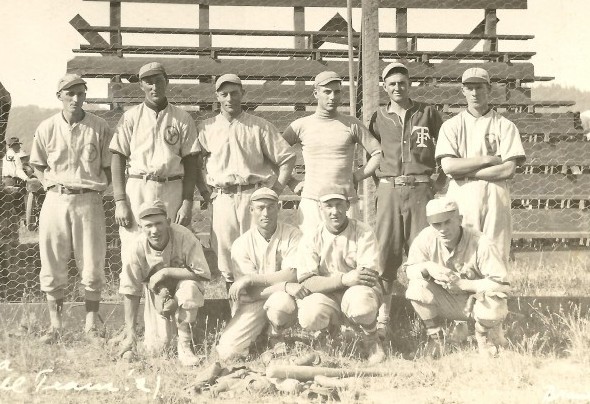
With a perfect game one out from completion, Turpin had struck out three, retired 11 on infield ground balls, seven on pop-ups and five on outfield fly balls. Only two San Diego batters, Jack Calvey and George Detore, made Seattle outfielders really run to catch fly balls.
Turpins counterpart, Frank Dasso, a one-time roommate of Ted Williams, also had an impressive game, limiting the Rainiers to two runs on five hits, all singles. Dassos teammates hurt him by making four errors, and Dasso hurt himself with a second-inning wild pitch that enabled Seattle catcher Bill Beard to score the Rainiers first run. Al Niemiec, Seattles second baseman, tallied the other on a sixth-inning error by Padres second baseman Jack Whipple.
Dasso, the ninth hitter in the Padres order, was scheduled to become the 27th man to face Turpin. But the 45-year-old Durst elected to replace Dasso with a pinch hitter himself, a move that failed to elate the 5,500 fans at Lane Field.
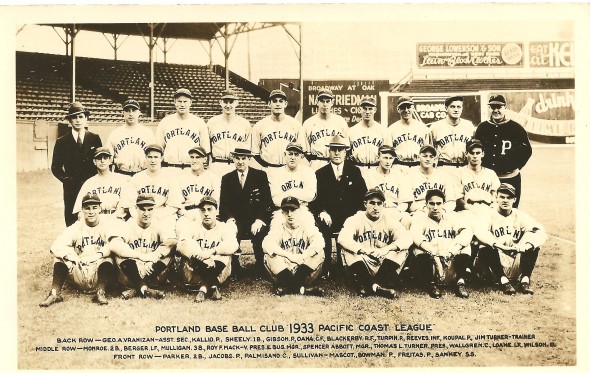
When Turpin came out for the ninth inning, San Diego fans issued him a huge round of applause, clamoring for the first perfect game in Pacific Coast League history. But when Durst strode to the plate aiming to spoil it, his hometown fans showered him with hoots.
Durst, not ready to concede defeat with the Padres trailing by only two runs, wanted to get something going. But Turpin quickly went to o-and-2 on Durst, who then eyed two balls, working the count to 2-and-2. Turpins next offering broke low and outside.
Ball. 3-and-2.
Until that moment, 42 no-hitters had been thrown in the Pacific Coast League, dating to the first one by Doc Newton of Los Angeles against Oakland Nov. 8, 1903. No Seattle pitcher had tossed a no-hitter since Charley Sea Lion Hall defeated Oakland 2-0 May 12, 1906. Forty-two no-hitters, but not a single perfect game, and Turpin stood one strike away.
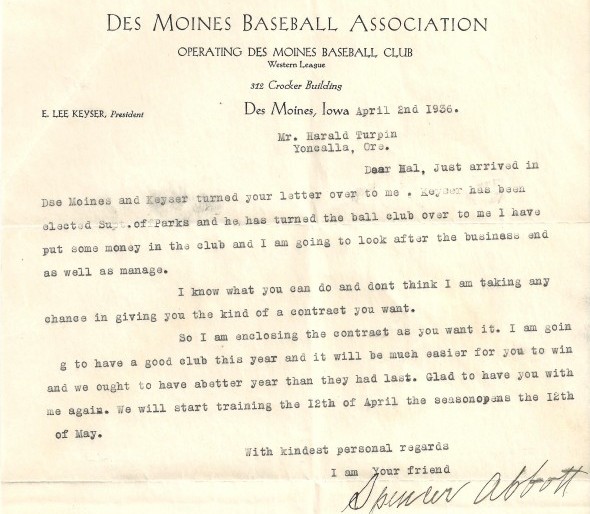
(Hall, who pitched for Seattle from 1904-06, is generally regarded as baseballs first relief pitcher. Connie Mack called him the greatest relief pitcher on earth, and his above-mentioned no-hitter was the second of his PCL career. Hall threw his first April 5, 1905. In 1912, Hall, along with Smoky Joe Wood, became one of five Boston hurlers to pitch the Red Sox to the World Series title.)
According to Seattle manager Bill Skiff, who got his job when Rainiers management rejected an application by Babe Ruth, Turpins 3-and-2 pitch to Durst caught the outside corner of the plate beautifully, and as soon as it popped into Beards mitt, Durst started, head down, toward the San Diego dugout.
Farmer Hal Turpin had never thrown a one-hitter, much less perfect game, in a professional career that began in 1927, when he signed with the San Francisco Seals, at the age of 23.
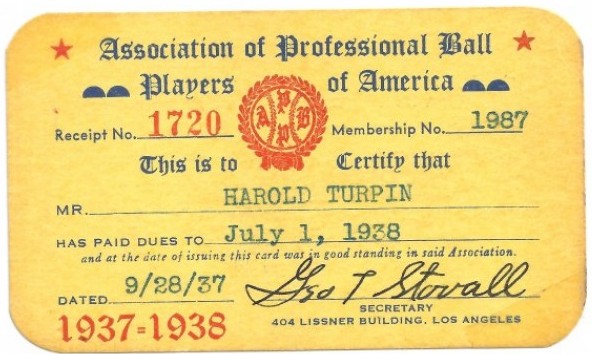
Born Sept. 28, 1903, in a farmhouse halfway between Scotts Valley and Yoncalla, OR., to Missouri transplants Joseph and Cynthia Turpin, Turpin was the youngest of nine children. After Joseph Turpin passed away, Hal quit school so he could work the family farm.
Although not a student, Turpin pitched for Yoncallas high school team and later the Yoncalla town team, as well as for clubs in North Bend, Cottage Grove and Albany, the latter a member of the Willamette Valley League.
With Albany in 1926, Turpin drew the interest of the San Francisco Seals during one of their road trips to Portland, and specifically manager Nick Williams, who signed Turpin to a contract for the 1927 season.
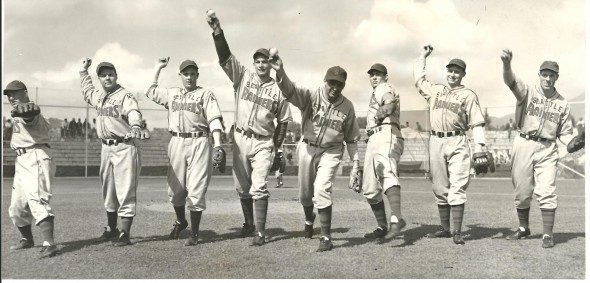
A 5-foot-11 righthander, Turpin employed a conventional overhand delivery and relied principally on a fastball and curve to get batters out. But because of youthful inconsistency and arm problems, Turpin didnt have much success, the main reason why he bounced between the mid-minors and low minors from 1927-30, never sporting much more than a .500 record.
Midway through 1931, San Francisco dealt Turpin to the Seattle Indians. After an unremarkable stay in the Queen City, Turpin went to Denver of the Western League and won 13 games in 1932, prompting Portland to purchase him in 1933. His stint with the Beavers, which included 15 wins in 1934, ended early in 1935, when he developed a sore arm.
At that point, the 31-year-old Turpin could have called it quits and become a full-time farmer. Instead, Turpin elected to give his career one more try.
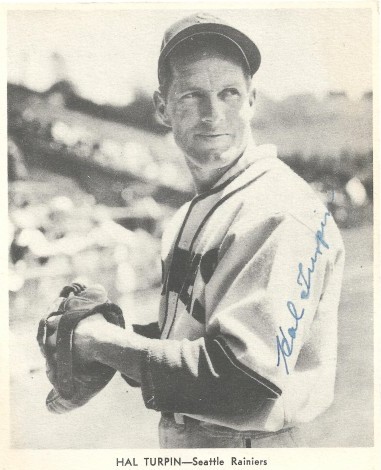
Turpin returned to Denver of the Western League, where he made two career-altering discoveries: if he threw the ball sidearm, his arm didnt hurt, and a sidearm delivery actually enhanced his control. Result: in 1936, Turpin became a 20-game winner for the first time.
Following the 1936 season, the perpetually struggling Indians replaced manager Dutch Reuther with Spencer Abbott, who directed the Des Moines club when Turpin won 20 games.
As a condition of his hiring, Abbott insisted the Indians purchase Turpin, which they did for $1,750. A better bargain they never received.
Turpin really refined his breaking pitches after joining the Indians. In addition to his curve, he developed a slider so nasty that teammate Paul Gregory said Turpin could throw it through a knothole.
The sidearm knuckler, Turpins Sunday Pitch, darted in unpredictable directions and was described by Turpins teammates as nearly unhittable.
According to Baseball Digest, Turpin kept a book, albeit a mental one, on hitters. He understood their strengths and weaknesses. He also studied other pitchers. But mostly, as he told Royal Brougham of The Seattle Post-Intelligencer, he worked on mastering his own control.
Control, Turpin told Brougham, is the secret of my pitching.
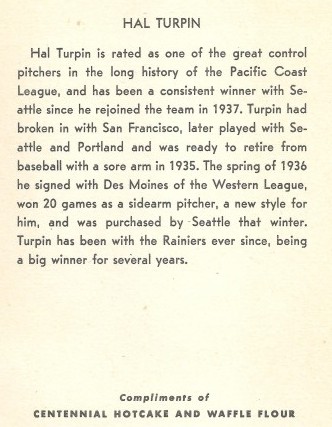
Turpin was the one good thing that came out of the brief but stormy tenure of Spencer Abbott as manager of the Indians, wrote The Seattle Times. When Abbott signed, he insisted on buying Turpin. Turpin came and stuck, but Abbott was fired a month after the season opened.
After going 9-11 on a bad, nearly bankrupt, 1937 Indians team that became the Rainiers in 1938 after beer baron Emil Sick purchased the club from William Klepper, Turpin flowered as a starting pitcher.
Between 1938-42, Turpin never won fewer than 17 games, produced four 20-victory seasons in a row (1939-42) and became a prodigious innings eater, averaging 270 per campaign.
With Fred Hutchinson in Detroit (1938), Hal Turpin and Dick Barrett carried the Rainiers pitching staff, The Sporting News explained. Turpin was a junk-ball pitcher, and the key to his success involved his ability to control his fastball and curve while mixing in an effective knuckleball. The side-wheeling right-hander didn’t worry about strikeouts. He was a make-’em-hit-it pitcher with excellent control.
Any discussion of Rainiers pitching during the years immediately preceding World War II inevitably starts with the cherubic, fun-loving Kewpie Dick Barrett, who went 66-32 with a 2.80 during the three seasons, 1939-41, that Seattle, first under Jack Lelivelt (1939-40) [see Wayback Machine: Jack Lelivelt’s Seattle Rainers] and then under Skiff (1941) won Pacific Coast League pennants.
But over the same span, Turpin compiled a record of 66-27, and with a slightly lower ERA, 2.80, allowing 240 earned runs to Barretts 270. Turpin and Barrett worked almost the same number of innings, Turpin 846 to Barretts 870.
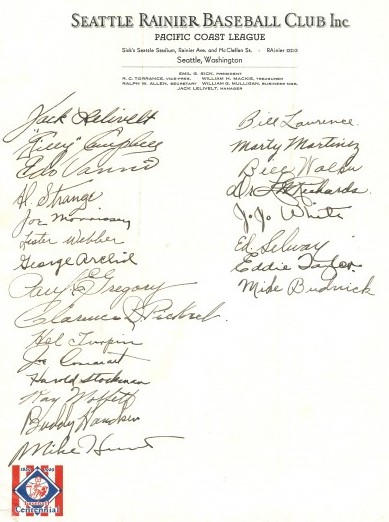
Turpin led the 1939 champions in victories with 23 and the 1941 pennant winners in winning percentage (.769). Barrett led the PCL in strikeouts (164) for the Rainiers second title team in 1940.
They were the heroes of three pennant races, wrote The Seattle Post-Intelligencer.
Barrett pitched Rainiers pennant-clinching games in 1940 and 1941. Turpin sealed the first one in 1939, defeating the Los Angeles Angels 4-3 at Sicks Stadium.
That marked the first flag for Seattle in 15 years. Sick was so elated that he awarded his players 14-karat gold rings featuring small diamonds representing the four bases and a larger diamond in the middle, signifying the pitchers mound.
Surrounding the bigger diamond were the words Pacific Coast League Champions, and the Rainiers certainly were that on the field and at the turnstiles. Sicks 1939 team outdrew seven major league clubs while setting a minor league attendance record of more than half a million.
Barrett and Turpin made for an interesting contrast, as The Times pointed out:
Barrett is an aggressive chap who yells for special mound assignments. Thats why he gets them. Turpin, on the other hand, is a quiet guy who awaits pitching orders and then does a workman-like job.
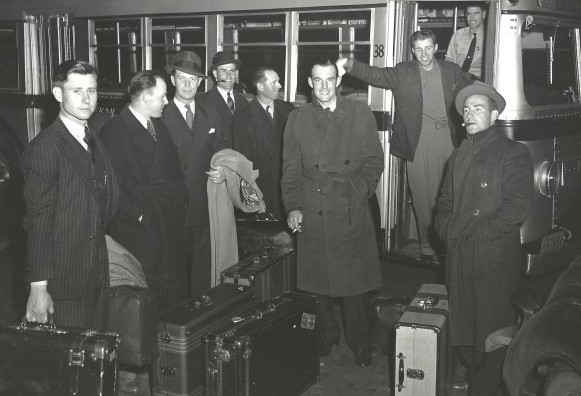
Turpin wore a Seattle uniform for 11 years and never said much to anybody; Hi, or Hello, almost constituting a speech. As Dan Raley wrote in Pitchers of Beer, The joke was that the man with all of the off-speed pitches would say hello to start a season, win his 20 games, and say goodbye when he left, and that was it.
“Bunches of words werent forthcoming from this guy. He traveled in silence outside the ballpark, too. Turpin and the equally tight-lipped George Archie earlier were road roommates. One could only imagine the total lack of conversation between these two players in their hotel rooms.
Tough to get two words out of the guy (Turpin), Baseball Digest wrote in 1940. Hes very quiet, and equally competitive. Turpin and Barrett are a great pair.
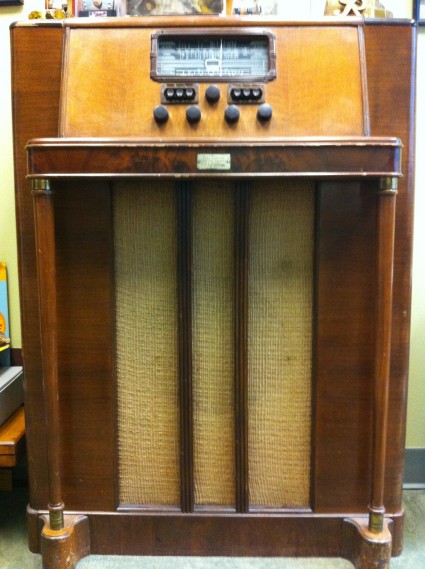
Turpin rarely made himself available to reporters, usually skipping out of the locker room quickly. According to the sports writers who tracked the Rainiers, Turpin didnt socialize much, preferring to leave Sicks Stadium quickly after games in order to have dinner at his favorite eateries, roadside diners.
Also in contrast to Barrett, who could stretch even seven-inning games into three-hour affairs, Turpin worked quickly on the days he pitched.
“He could pitch a game in an hour and 20 minutes, Edo Vanni told The Seattle Post-Intelligencer. Back in those days, they couldn’t sell beer (at Sicks Stadium) on Sundays.
“So Barrett pitched Saturday night because he always took three hours (more time for Sick to sell beer). Turpin was bad for the concession stands (fast games cut into beer sales), but he pitched Sunday because that was getaway day and we had to catch a train.”
Turpin could have given the major leagues a whirl, but never expressed much interest, mainly owing to the fact that pitching on the East Coast, where most of the major league teams were located, would have taken him too far from his Oregon farm, which he developed into a considerable operation.
In June 1943, for example, a manpower shortage caused by World War II left Turpin without enough workers to keep his farm operating properly. So early that season, Farmer Hal took a sabbatical from baseball, giving the club no guarantee that he would return.
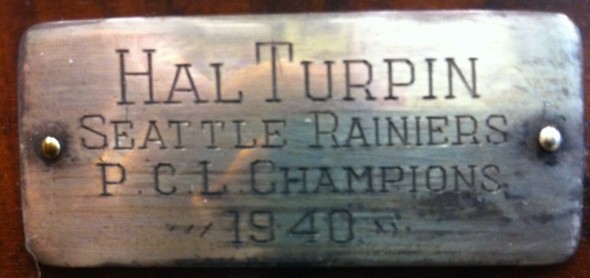
Turpin has quite an investment in Yoncalla, The Times explained. Hes steadily built up his holdings, through his baseball earnings, until he has rolling fields under cultivation, sheep and cattle to feed, and fruit crop to market (also hay, oats and wheat).
“Turning that investment over to the kind of farm help available is rather precarious. If he can find farm help, hell rejoin the team. If not, well, perhaps by next season things will be different.
According to an article published by SABR, Turpin’s farm consumed him. He spent much of his down time from baseball, both in Seattle and on road trips, scouring PCL cities for farm equipment: the war effort created metal and rubber shortages and machinery was hard to come by (Turpin’s wife, Georgia Mae, once famously remarked that Turpin ran his farm from the pitching mound).
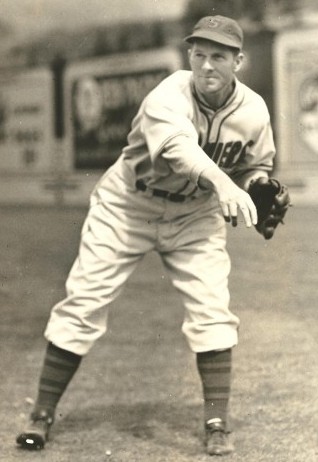
Skiff tried to strike a bargain with Turpin, asking him to consider pitching once a week during his sabbatical, preferring the 10 starts Turpin could give him over the balance of the season to none at all. Turpin wouldnt agree, but told Skiff he would stay in shape, which he apparently did.
I hung a sack of oats in the barn, just where the pitching spot on a batter would be, Turpin told Alex Schultz of The Times. I throw at it in my spare time, and my young son tosses the balls back to me. I know that as long as Im hitting the sack I still have my control.
Turpin never did return to the Rainiers that season.
After his aborted 1943, Turpin rejoined the Rainiers in 1944 and won 13 games. He added 18 more wins in 1945 at age 41. But after the Rainiers lost the league finals, the teams management, including Torchy Torrance, Bill Mulligan and Skiff, decided that a rebuilding effort was warranted. They opted to move forward without Turpin and the 39-year-old-year Barrett, who signed with Portland.
On Jan. 12, 1946, the Rainiers released Turpin, whom Sacramento picked up for the $2,500 waiver price.
Skipper Skiff may have done Turpin a favor, as the veteran should last four or five more seasons under the hot Sacramento sun, The Times reported. Turpin has been a favorite of fans since he came here in 1937 and it will be a strange pitching staff without him. But Skiff wanted a younger team.
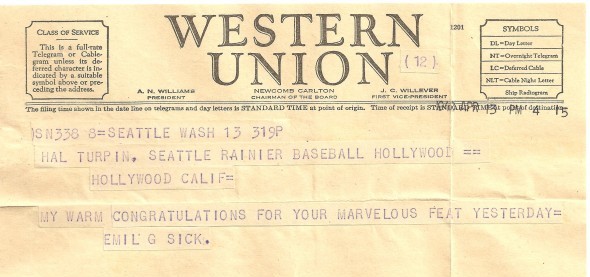
Turpin pitched only three games for Sacramento in 1946 before quitting to farm on a full-time basis. He exited with a record of 271-203 (one of 12 pitchers to win 200 PCL games), a 3.28 earned-run average, 249 complete games and 29 shutouts in 20 minor-league seasons with four teams, including a 163-103 mark in 11 seasons with the Indians and Rainiers.
Turpin cited as one of his reasons for quitting the fact that PCL teams had started traveling by airplane by that season. Turpin had never been in a plane and decided it was too late to start.
Of the 266 decisions Turpin had with the Rainiers (Jamie Moyer had a record 232 decisions with the Mariners), one of the most memorable occurred that Sunday afternoon in San Diego in April, 1942.
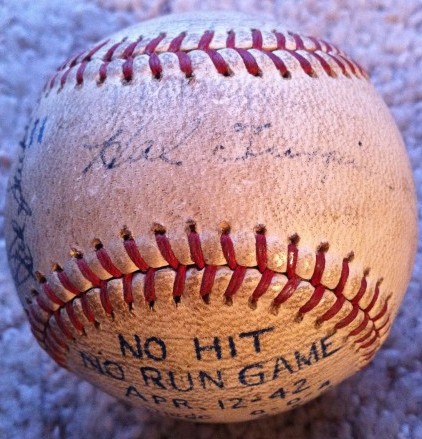
As Durst began a slow retreat to the San Diego dugout, umpire Bill Doran, either courageously or outrageously, yelled Ball! spoiling Turpins perfect game.
The next batter, Bill Salkeld, grandfather of Roger Salkeld, a future No. 1 pick by the Seattle Mariners (1989), nearly ruined the no-hitter, slapping a looping liner toward second base, just high enough for Seattle second baseman Al Niemiec to lose it in the sun.
The sun was shining in my eyes, but I remembered where the ball was, Niemiec said years later. I reached up and it stuck in my glove. At that point, Turp got up off his knees and said, Thanks. He thought the ball was lost in the sun.
Turpin threw 89 pitches, including 56 strikes and 33 balls in the one-hour, 37-minute contest. He became the first PCL pitcher to toss a nine-inning no-hitter since May 5, 1932, when Sacramentos Tony Freitas did it. The Rainiers mobbed Turpin immediately.
It was like a college movie, Skiff said. All the team rushed out and darned near beat Turp to death congratulating him.
As for Dorans ball call, Skiff said, Hal put in there what looked like a beauty to me, with the count 3-and-2. But Doran called it a ball and Durst walked. Durst was all but heading for the dugout, thinking it was a strike. I sure thought it was a strike.
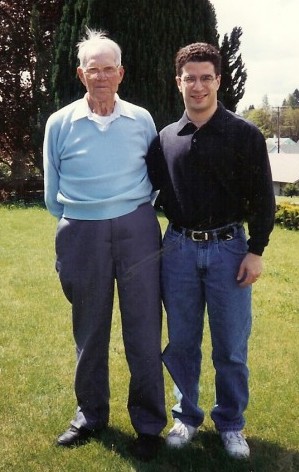
So did Rainiers coach Eddie Taylor, who admitted to The Times that he never forgave Doran for the ball-four call.
“The damned umpire blew it, Taylor told the newspaper. He called a ball on a pitch that was a strike. It was a shame because Turp deserved a perfect game.”
Said Turpins battery mate, Beard: Boy, I was so nervous that last couple of innings I was scared to death. But Hal was just as cool as a cucumber out there and he was sure sending some swell stuff up to the plate. I actually think I got as much of a kick out of as Turp did.
Neither then, nor in several subsequent interviews, did Turpin ever question or complain about Dorans call. He did say at the time, I got the no-hitter, and Im lucky for that. I didnt have any better stuff than usual. But it seemed like the ball was taking off a little more.
Thats all Turpin said about his near-perfect game in its immediate aftermath. But 50 years after he pitched it, and in a burst of loquaciousness, he told Rich Johnson of The Times, “I think I could have got the ball over if I’d tried more. But Durst thought he was struck out on that 3-and-2. It was close. But the umpire, he saw it the other way.”
He doesnt like all the compliments, said Skiff. Makes him uncomfortable. But Hal did a sensational job and its too bad he couldnt have been completely perfect nobody to reach first base.
The quick upshot to Turpins no-hitter: Skiff originally scheduled Barrett to pitch the Rainiers April 22 home opener at Sicks Stadium (Barrett loved pitching openers), but the public clamor for Turpin was so great that Skiff let Turpin go against the Oakland Acorns. Turpin responded with a 4-0 victory that elevated the Rainiers into first place.
Turpin displayed even better stuff in that win over Oakland than he did in his no-hitter. Said Oaklands Jack Salverson: The third strike that Turp threw past me to end the ball game was a knuckler that could have talked.
A charter member of the Rainiers Roll of Honor (one of 11 elected in 1954), Howard Hal Turpin worked his farm after his retirement from baseball and lived to the age of 93. He died Feb. 28, 1997, in a Roseburg, OR., nursing home, six years before his 2003 induction into the Pacific Coast League Hall of Fame.
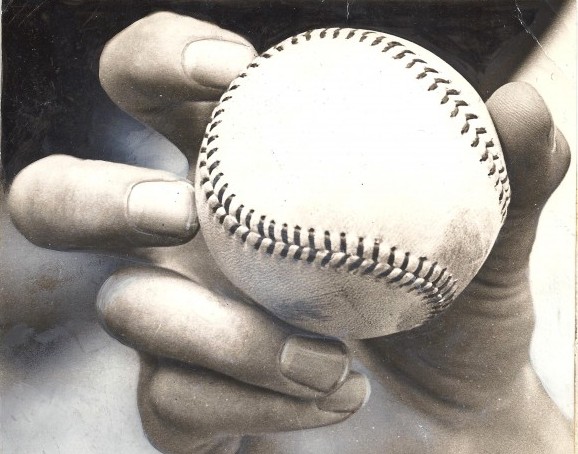
———————————————–
Many of the historic images published on Sportspress Northwest are provided by resident Northwest sports history aficionado David Eskenazi. Check out Davids Wayback Machine Archive. David can be reached at (206) 441-1900, or at seattlesportshistory@gmail.com

10 Comments
What a great story. So well told. Thank you.
Thanks so much for visiting! We really appreciate it.
What a great story. So well told. Thank you.
Thanks so much for visiting! We really appreciate it.
Ahhh, the Yoncalla Farmer. You guys are right: Turp probably made Charlie Gehringer look like Tommy Lasorda in the gabbing department. You couldn’t find two more different pitchers and perosnalities than Hal Turpin and Dick Barrett, but what a pair of aces to draw to.
Great job as usual, guys. I always look forward to seeing who you’ll be doing a piece on next. Of course, I have all kinds of suggestions…
Send them our way. We’re up for it.
I was kidding. I’m sure you’ve noticed all of us readers have suggestions, not all of which involve performing the anatomically impossible. I feel a little awkward about throwing story ideas around on a message board, but what the hell…here are three:
1. The Pay’n’Pak/Peterbilt Western/Seafirst team that dominated men’s major league fastpitch in the Northwest for nearly three decades, first under Bill Fenton and then Tom Wagner. A lot of those players are in the ASA Hall of Fame now.
2. I mentioned a while back that Dugdale Park could be interesting if only because so little has been written about it (and good luck finding pictures on the web). First double-decked ballpark west of the Mississippi. Who knows how long it might’ve lasted if it hadn’t burned down?
3. The Seattle Rangers of the Continental Football League in the 1960’s are sort of forgotten. Al Worley, George Jugum, Kermit Jorgensen and Mac Bledsoe all played for them.
I’ll stop there, but there’s always more.
Ahhh, the Yoncalla Farmer. You guys are right: Turp probably made Charlie Gehringer seem like Tommy Lasorda in the gabbing department. You couldn’t find two more different pitchers and personalities than Hal Turpin and Dick Barrett, but what a pair of aces to draw to.
Great job as usual, guys. I always look forward to seeing who you’ll be doing a piece on next. Of course, I have all kinds of suggestions…
Send them our way. We’re up for it.
I was mostly kidding. I feel a little awkward about throwing story ideas around on a message board and have edited this reply because I’d really rather do it in a private email. I’ll try that route.